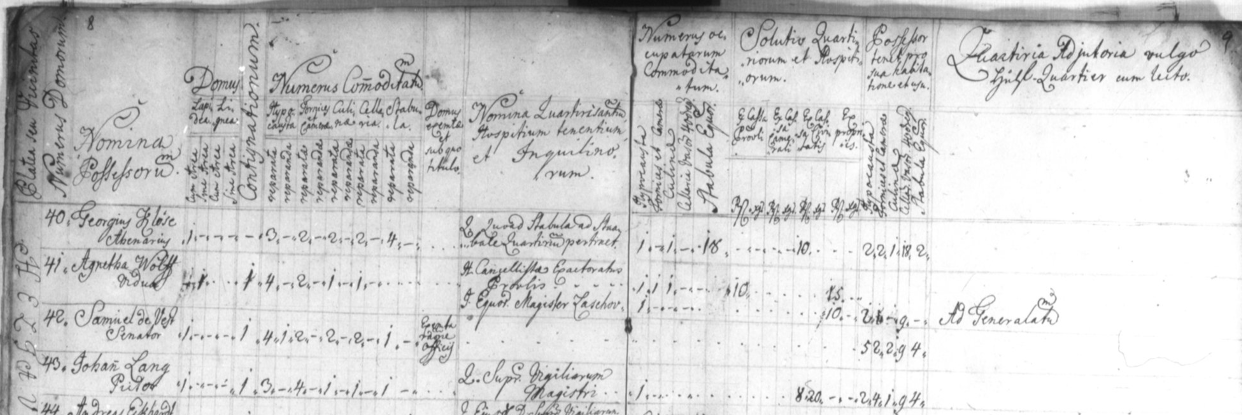
A workshop organized on the 30th – 31st of July 2024, by the Centre for Population Studies, Babeș-Bolyai University of Cluj-Napoca
The Centre for Population Studies from the Babeș-Bolyai University of Cluj-Napoca aims to bring together scholars from social and medical history, as well as historical demography, to reflect on the inter-related topics of urban housing and health in East-Central and Southeastern Europe between the 18th and early 20th centuries.
With support from a SeeFField grant from the University of Regensburg, we would like to explore the broader trends that characterized the way in which urban housing in East-Central and Southeastern European cities and towns worked to create a landscape of (epidemic) disease that differed considerably from its Western and Northern European counterparts.
Despite excellent and manifold recent enquiries into related issues such as military quarantine and the medicalization of (Habsburg) borders (Trubeta, Promitzer and Weindling 2021, Pešalj et al. 2023), a distinctive engagement with the related issues of space & health in these European areas, beyond this specific milieu seems so far to be limited. While new medical histories have begun to shed increasing light onto the East-Central and Southeastern European environments, including through wider-scale collaborative projects which employ a transnational perspective (COST Action 22159– National, International and Transnational Histories of Healthcare, 1850-2000), there is still a pronounced disconnect between local-level micro-historical approaches – the preferred lens for urban history – and macro-historical endeavors that deal with how urban living space was configured, how medical discourses played into these configurations, and how living (together) was perceived to impact the transmission and containment of disease.
This initiative is also spurred by recent studies into the history of the home, which center on the twin notions of comfort and the experience of being “at home” (Hague and Lipsedge 2022, Stobart 2022). Similarly to enquiries dealing with material living situations and circumstances of non-middling class groups (Harley & et al. 2022), such studies are, if not Anglo-centric in focus, almost entirely circumscribed to already well-researched Western European milieus. What did a comfortable home mean for eighteenth-nineteenth-century inhabitants of small and large towns of East-Central and Southeastern Europe? How did issues such as furnishings, room size, heating fixtures, ventilation, and lighting play into the medicalization of living space?
Beside these specific questions, we encourage papers which pose enquiries related to the following topics:
- How was the relationship between urban living space, epidemic spread, and healthcare provision articulated in specific milieus in East-Central and Southeastern Europe?
- How did the understandings of disease spread interact with legal pluralism in regard to property ownership in these areas, and what effects did this have on legally gray categories, such as tenants in cities?
- Where did state/military viewpoints on urban space & living conditions diverge from local urban authorities’ perspectives, especially concerning disease containment?
- What types of sources exist that can shed light on the major shifts experienced by urban space in these milieus, and what preliminary health-related findings can these sources suggest at this stage in the research? To what extent is harmonization between different sources of varied geographical and political provenance possible?
- What role does the military – and military billeting – play in regards to a general reconfiguration of urban living space in East-Central and Southeastern Europe?
We invite contributions from interested scholars, to be submitted to Oana Sorescu-Iudean (oana.sorescu-iudean@ubbcluj.ro or oana.sorescu@gmail.com) by the 1st of June 2024. Submissions should include a 1-page CV with relevant publications, and 300–500-word abstracts. Organizers will cover lodging and meals for the duration of the workshop.
References:
Hague, S. G., and Lipsedge, K., eds., (2022). At Home in the Eighteenth Century. Interrogating Domestic Space. Abingdon, New York: Routledge.
Stobart, J., ed. (2021). The Comforts of Home in Western Europe, 1700-1900. Bloomsbury Publishing.
Harley, J., Holmes, V., Nevalainen, L., eds., (2022). The Working Class at Home, 1790–1940. Springer.
Pešalj, J. Steidl, A., Lucassen, L. and Ehmer, J., eds. (2023), Borders and Mobility Control in and between Empires and Nation-States, Leiden, Boston: BRILL.
Trubeta, S., Promitzer, C., Weindling, P. eds. (2021), Medicalising borders: selection, containment and quarantine since 1800, Manchester: Manchester University Press.